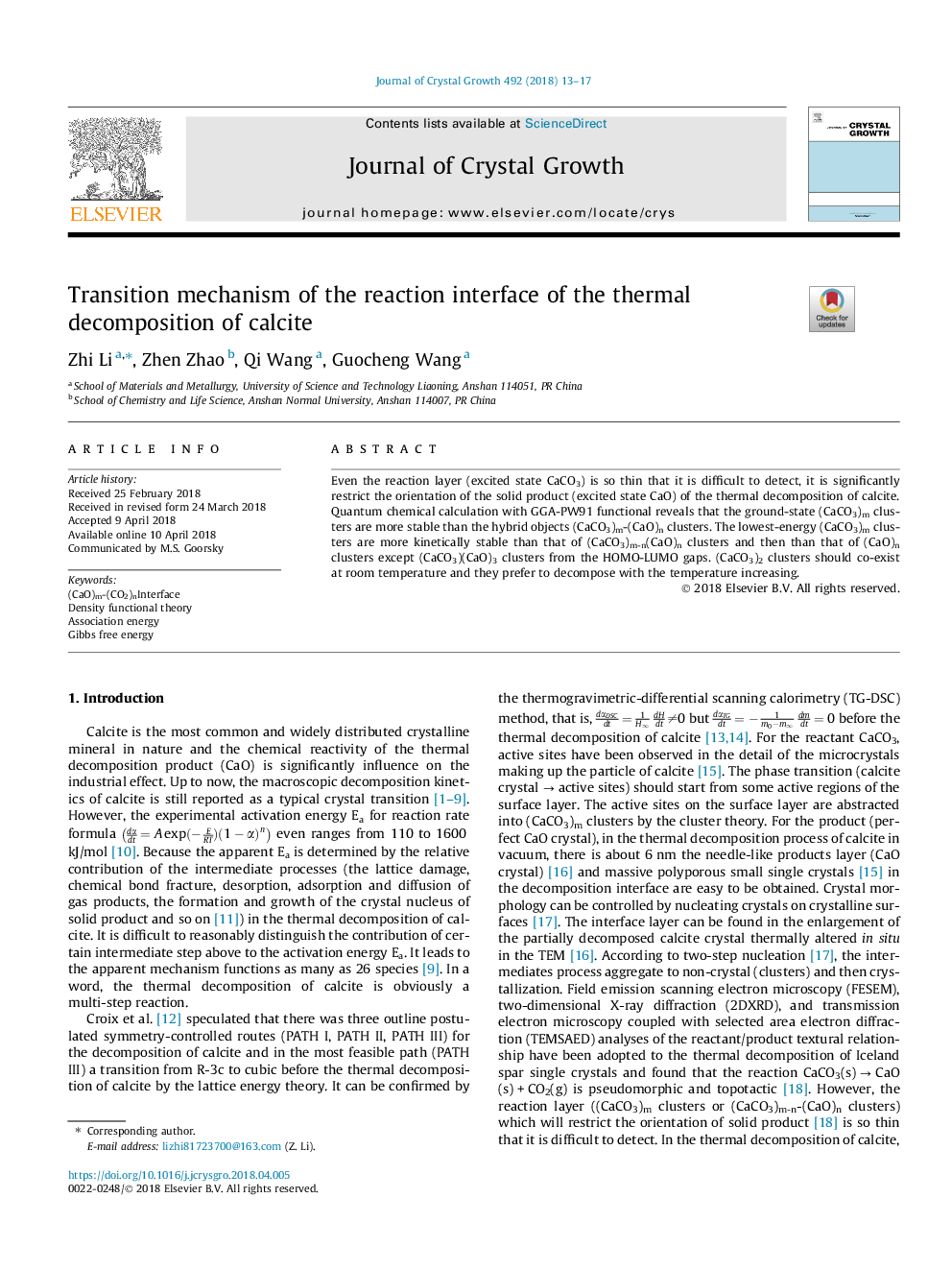| Article ID | Journal | Published Year | Pages | File Type |
|---|---|---|---|---|
| 8148511 | Journal of Crystal Growth | 2018 | 5 Pages |
Abstract
Even the reaction layer (excited state CaCO3) is so thin that it is difficult to detect, it is significantly restrict the orientation of the solid product (excited state CaO) of the thermal decomposition of calcite. Quantum chemical calculation with GGA-PW91 functional reveals that the ground-state (CaCO3)m clusters are more stable than the hybrid objects (CaCO3)m-(CaO)n clusters. The lowest-energy (CaCO3)m clusters are more kinetically stable than that of (CaCO3)m-n(CaO)n clusters and then than that of (CaO)n clusters except (CaCO3)(CaO)3 clusters from the HOMO-LUMO gaps. (CaCO3)2 clusters should co-exist at room temperature and they prefer to decompose with the temperature increasing.
Related Topics
Physical Sciences and Engineering
Physics and Astronomy
Condensed Matter Physics
Authors
Zhi Li, Zhen Zhao, Qi Wang, Guocheng Wang,
